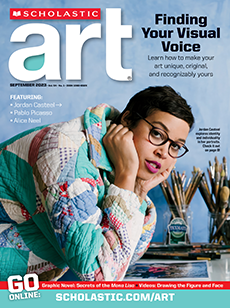In the artwork above, a young boy flexes his muscle and a girl pokes at it. White text on a red background cuts across the image. It says, “We don’t need another hero.” What idea is the artist, Barbara Kruger, sharing?
To understand it, you first need to know some background. Kruger depicts the children in the style of a 1950s advertisement. The boy’s pose mimics one in a 1942 motivational poster. The poster encouraged women to work while men were fighting overseas in World War II. Forty-five years later, in 1987, Kruger uses a similar image with new text to convey a different message.
In the artwork above, a young boy flexes his muscle. A girl pokes it. White text on a red background cuts across the image. It says, “We don’t need another hero.” What idea is the artist, Barbara Kruger, sharing?
Kruger depicts the children in the style of a 1950s advertisement. The boy’s pose looks like the woman’s pose in a famous 1942 poster. The poster encouraged women to work while men fought in World War II. Forty-five years later, in 1987, Kruger adds her own text to a similar image. She shares a message meant to empower modern women.
